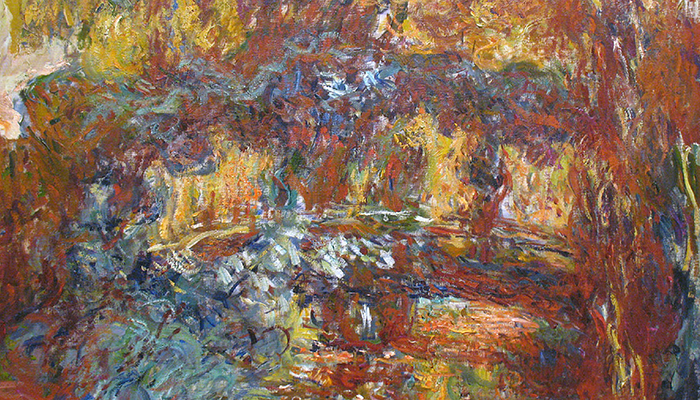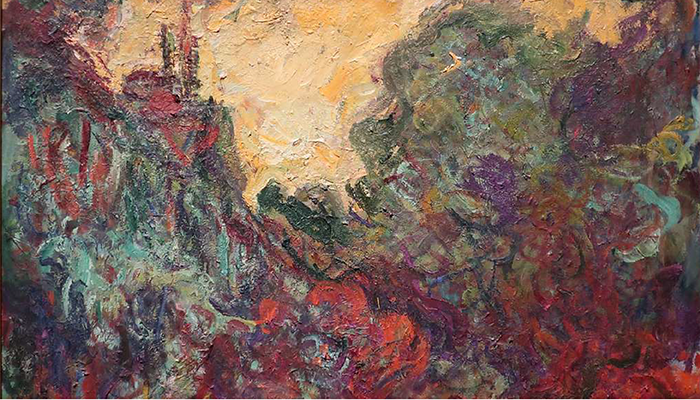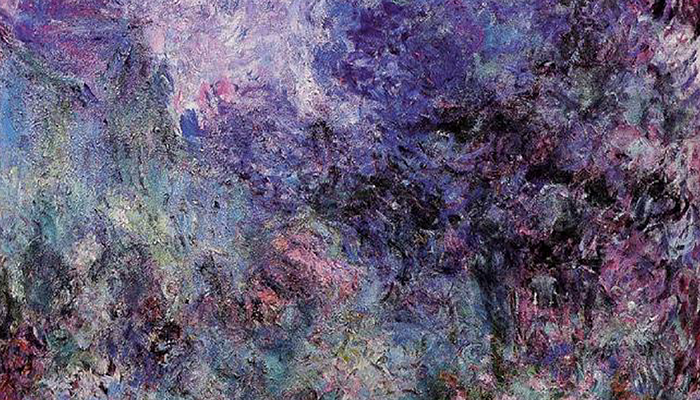
Credit: Claude Monet, The Japanese Footbridge. 1920-1922 | Wikimedia Commons
If you need a reminder towards the value of eyesight, the importance of managing expectations, or the positive impact you can have on your patients, read on…
In the winter of 1921, Impressionist painter Claude Monet wrote “I will paint almost blind, as Beethoven composed completely deaf” in a letter to journalist Marcel Pays about his declining sight. This was just five years before his death from lung cancer, though it had been over a decade since Parisian ophthalmologists first diagnosed him with bilateral age-related cataracts (specifically, nuclear sclerosis).
The visual changes accompanying cataracts not only impact visual sharpness but also significantly alter color perception – and, if you consider the importance of transience in Monet’s art, this was a significant problem. Speaking with an eye doctor, Monet admitted he could no longer discern “colors with the same intensity,” nor could he interpret sunlight. The color red, for instance, became “muddy.” The color pink was “insipid,” and the “intermediate or lower tones,” too, had eluded him.
The nature of Monet’s cataracts essentially acted as a color subtracting filter, whereby the spectrum of shades visible to him were replaced for a dull, yellow-like quality. It is even rumored that Monet was forced to place labels on his paint bottles since he could no longer tell the difference between colors on his palette. He wrote, “My bad eyesight meant that I saw everything in a fog. It’s very beautiful and it’s what I would like to be able to represent in my art.”
Despite numerous recommendations, Monet spent many years avoiding surgical intervention. In the early 18th century, the process of operating in a relatively painless manner was still fraught with complications – Monet witnessed first-hand what the cost of an unsuccessful intervention was for fellow artists Honoré Daumier and Mary Cassatt, who never picked up a brush again. Monet said, “I prefer to make the most of my poor sight, and even give up painting if necessary, but at least be able to see a little of these things that I love.”
For some time, Monet found success with mydriatics, which allowed more light to pass through his cataractous lens: “I have not seen so well for a long time, so much so that I regret not having seen you sooner,” he said. But, by 1923, his visual deterioration had become so severe that there was no choice other than surgery.
The procedure required Monet to lie flat on his back with sandbags placed next to him to prevent movement, but it wasn’t long until he grew tired of compromising for the sake of his sight. Various accounts suggest Monet’s post-operative period, which rendered him aphakic and immobilized for 10 days, was rife with arguments, disdain, and noncompliance. In a letter written to his surgeon, Coutela, Monet said, “It is to my great chagrin that I regret having had this fatal operation. Pardon me for speaking so frankly and let me tell you that it is criminal to have put me in this situation.”
Three weeks after surgery, Monet was given a pair of aphakic spectacles – a move that would only make matters worse. He would complain of cyanopsia and the abnormal curve objects now had. What’s more, his new found vision led him to destroy canvases from his preoperative period for he found discomfort in seeing the garish strokes and harsh colors depicting his former visual environment.


Credit: The same scene of “The House in the Rose Garden” Before and after surgery.
Monet’s discomfort would continue for the following two years. However, by 1925, he had regained his right visual acuity and reconciled with the outcome of his surgery. This also saw him resume painting in a manner similar to his pre-cataract period. Indeed, the delicate color schemes of gentle blues and wide ranging greens were once again consistent with his earlier works. Some even speculate that Monet was now able to perceive colors not dissimilar to a bee: “What prevents us from seeing UV light is our lenses, which filter it out. But when Monet’s lens was removed, that constraint was lifted.”
No matter how abstract or expansive Monet’s artwork became in his later years, his love and appreciation for nature would persist. In his words: “My sensitivity, far from diminishing, has been sharpened by age, which holds no fears for me so long as unbroken communication with the outside world continues to fuel my curiosity, so long as my hand remains a ready and faithful interpreter of my perception.”
